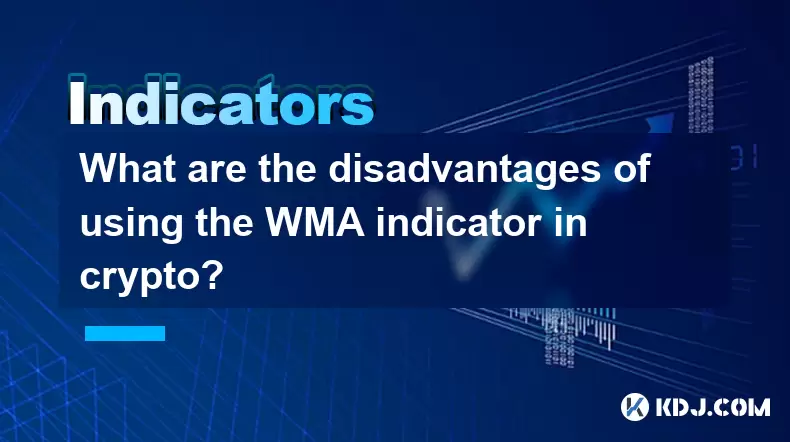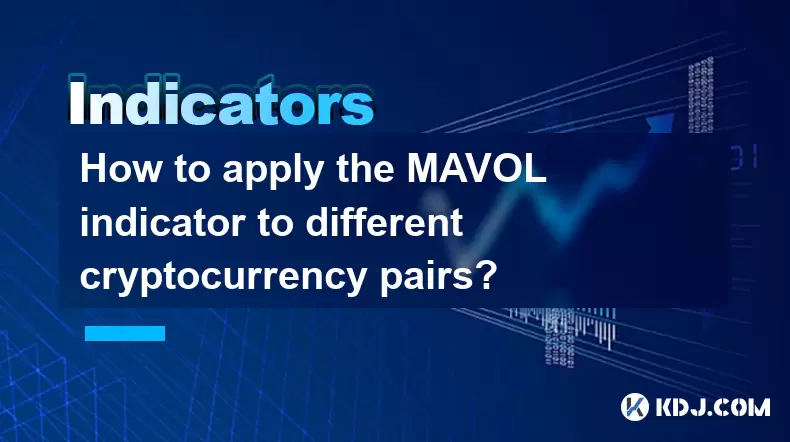-
 Bitcoin
Bitcoin $118400
0.47% -
 Ethereum
Ethereum $3836
2.20% -
 XRP
XRP $3.157
2.98% -
 Tether USDt
Tether USDt $0.9999
-0.03% -
 BNB
BNB $801.5
1.31% -
 Solana
Solana $180.9
2.07% -
 USDC
USDC $0.9999
-0.02% -
 Dogecoin
Dogecoin $0.2225
2.50% -
 TRON
TRON $0.3285
-1.02% -
 Cardano
Cardano $0.7789
2.60% -
 Hyperliquid
Hyperliquid $43.60
2.39% -
 Sui
Sui $3.892
4.41% -
 Stellar
Stellar $0.4229
3.34% -
 Chainlink
Chainlink $18.01
3.98% -
 Hedera
Hedera $0.2745
6.77% -
 Bitcoin Cash
Bitcoin Cash $582.3
3.38% -
 Avalanche
Avalanche $23.77
1.04% -
 Ethena USDe
Ethena USDe $1.001
0.01% -
 Toncoin
Toncoin $3.493
3.59% -
 Litecoin
Litecoin $110.0
2.48% -
 UNUS SED LEO
UNUS SED LEO $8.936
-0.37% -
 Shiba Inu
Shiba Inu $0.00001304
2.49% -
 Uniswap
Uniswap $9.999
1.09% -
 Polkadot
Polkadot $3.897
3.26% -
 Monero
Monero $308.6
-0.83% -
 Dai
Dai $0.9999
-0.01% -
 Bitget Token
Bitget Token $4.504
-0.04% -
 Pepe
Pepe $0.00001154
2.95% -
 Cronos
Cronos $0.1471
3.06% -
 Ethena
Ethena $0.6691
19.53%
What are the disadvantages of using the WMA indicator in crypto?
The WMA’s sensitivity to recent prices makes it prone to false signals in volatile crypto markets, leading to whipsaws and poor trade timing.
Jul 31, 2025 at 06:49 am

Understanding the WMA Indicator in Cryptocurrency Trading
The Weighted Moving Average (WMA) is a technical analysis tool used by traders to identify trends by assigning greater importance to recent price data. Unlike the Simple Moving Average (SMA), which treats all data points equally, the WMA gives higher weight to more recent prices, making it more responsive to new information. In the fast-moving crypto markets, this responsiveness might seem advantageous. However, this very feature introduces several drawbacks when applied to digital assets, which are known for their extreme volatility and susceptibility to noise.
While the WMA aims to reduce lag compared to the SMA, its sensitivity can lead to premature or false signals. Cryptocurrencies often experience sharp, short-lived price swings due to speculation, whale movements, or news events. The WMA may interpret these as trend changes, prompting traders to enter or exit positions based on misleading data. This is especially problematic during sideways or consolidating markets, where the indicator may generate whipsaw signals—rapid buy and sell triggers that erode capital through transaction fees and poor timing.
Increased Noise Sensitivity in Volatile Crypto Markets
Cryptocurrency price charts are inherently more volatile than traditional financial assets. The WMA's emphasis on recent data amplifies the impact of sudden price spikes or drops. For instance, if Bitcoin surges 10% in a few hours due to a tweet or exchange listing, the WMA will sharply pivot upward, potentially signaling a strong bullish trend. However, this movement might reverse just as quickly, leaving traders who acted on the signal at a loss.
This amplification of noise undermines the reliability of the WMA in crypto. Short-term volatility is not always indicative of a genuine trend. Because the WMA does not filter out this noise effectively, it often produces erroneous trading signals. Traders relying solely on WMA crossovers or slope direction may find themselves caught in a cycle of overtrading, especially on lower timeframes like 5-minute or 15-minute charts where volatility is most pronounced.
Lagging Nature Despite Weighting Adjustments
Although the WMA reduces lag compared to the SMA, it remains a lagging indicator because it is based entirely on historical price data. No moving average can predict future price movements with certainty. In crypto, where trends can reverse within minutes, even a slight delay can result in missed opportunities or significant losses.
For example, during a rapid bearish dump in Ethereum, the WMA may continue to reflect upward momentum for several candlesticks after the reversal has already occurred. This delay in signal confirmation means traders might hold losing positions longer than necessary. The WMA’s calculation—multiplying each price by a weighting factor and dividing by the sum of weights—still depends on past values, making it inherently reactive rather than predictive.
Difficulty in Parameter Optimization for Crypto Assets
Choosing the right period for a WMA (e.g., 10-day, 20-day) is critical to its effectiveness. However, in the crypto space, there is no universally optimal setting due to the diversity of assets and market conditions. Bitcoin may respond well to a 14-period WMA on a daily chart, while Dogecoin might require a 50-period WMA on an hourly chart to filter out noise.
Adjusting the WMA period involves a trade-off:
- A shorter period increases sensitivity but also false signals
- A longer period reduces noise but increases lag
Finding the right balance requires extensive backtesting across multiple coins and timeframes, which is both time-consuming and subject to overfitting. Over-optimized parameters may perform well on historical data but fail in live trading due to the dynamic nature of crypto markets.
False Breakouts and Whipsaws in Range-Bound Markets
Cryptocurrencies often enter extended consolidation phases where prices move within a defined range. During these periods, the WMA may generate repeated false breakouts. For example, if Litecoin fluctuates between $80 and $90 for several days, the WMA might cross above a prior resistance level momentarily, suggesting a breakout. However, the price quickly reverts, trapping buyers.
These whipsaws are exacerbated by the WMA’s design:
- It reacts strongly to short-term price spikes
- It lacks built-in mechanisms to confirm trend strength
- It does not account for volume or momentum independently
Traders using WMA-based strategies without additional confirmation tools (like RSI or MACD) are particularly vulnerable to these misleading signals. The cost of repeated false entries can accumulate quickly, especially with high trading fees on certain exchanges.
Integration Challenges with Other Technical Tools
While the WMA can be combined with other indicators, its responsiveness can create conflicting signals when used alongside lagging or momentum-based tools. For instance, pairing a 10-period WMA with a 14-period RSI might lead to contradictory advice: the WMA suggests a buy due to a recent price spike, while the RSI indicates overbought conditions.
To mitigate this, traders must:
- Synchronize timeframes across all indicators
- Use volume analysis to validate WMA crossovers
- Apply support and resistance levels to contextualize signals
- Avoid relying solely on WMA for entry or exit decisions
Even with these precautions, the fundamental mismatch between the WMA’s sensitivity and the chaotic nature of crypto pricing limits its standalone utility.
Frequently Asked Questions
Q: Can the WMA be used effectively on higher timeframes like daily or weekly charts in crypto?
Yes, the WMA performs better on higher timeframes because they filter out short-term noise. On daily or weekly charts, the weighting of recent prices still provides trend insight without being overly influenced by intraday volatility. However, signals will be less frequent, and traders must accept longer holding periods.
Q: How does the WMA compare to the Exponential Moving Average (EMA) in crypto trading?
The EMA also prioritizes recent prices but uses a smoothing factor rather than linear weighting. The EMA is generally more responsive than the WMA and is preferred by many crypto traders for its balance between sensitivity and stability. However, both suffer from similar drawbacks in highly volatile conditions.
Q: Is it advisable to use WMA crossovers (e.g., 10-period crossing 50-period) as a primary strategy in crypto?
Using WMA crossovers alone is risky due to whipsaws and false signals. They can be part of a broader strategy but should be confirmed with volume, candlestick patterns, or other indicators like MACD. Backtesting on specific assets is essential before live deployment.
Q: Does the WMA work differently across various cryptocurrencies?
Yes, due to differences in market cap, liquidity, and volatility. Major coins like Bitcoin and Ethereum tend to have smoother price action, making WMA slightly more reliable. Low-cap altcoins with erratic price swings render the WMA far less effective, often generating chaotic signals.
Disclaimer:info@kdj.com
The information provided is not trading advice. kdj.com does not assume any responsibility for any investments made based on the information provided in this article. Cryptocurrencies are highly volatile and it is highly recommended that you invest with caution after thorough research!
If you believe that the content used on this website infringes your copyright, please contact us immediately (info@kdj.com) and we will delete it promptly.
- SEC, Crypto, and On-Chain: Navigating the Regulatory Maze
- 2025-08-01 02:31:40
- Bitcoin Bullish Market: How Long Positions are Boosting the Crypto King
- 2025-08-01 02:35:33
- Visa, Stellar, and Stablecoins: A New York Minute on the Future of Finance
- 2025-08-01 01:50:50
- BCH, FET, BlockDAG: Decoding the Crypto Buzz
- 2025-08-01 01:16:37
- Conflux Token, Crypto Simplicity, and WeWake Finance: A New Era?
- 2025-08-01 01:50:50
- Dogecoin, Remittix, and Analyst Targets: Navigating the Crypto Landscape
- 2025-08-01 01:55:40
Related knowledge

What does it signify when the MACD crosses below the zero line?
Aug 01,2025 at 01:43am
Understanding the MACD IndicatorThe Moving Average Convergence Divergence (MACD) is one of the most widely used technical analysis tools in the crypto...

How does the MACD histogram show momentum?
Aug 01,2025 at 01:16am
Understanding the MACD Histogram and Its Role in Cryptocurrency TradingThe MACD histogram is a visual representation of the difference between the MAC...

What is a MACD crossover?
Jul 31,2025 at 11:52pm
Understanding the Role of Private Keys in Cryptocurrency SecurityIn the world of cryptocurrency, private keys are the cornerstone of ownership and con...

How can you use the MACD histogram to determine trend strength?
Jul 31,2025 at 11:10pm
Understanding the MACD Histogram and Its ComponentsThe MACD (Moving Average Convergence Divergence) histogram is a visual representation of the differ...

What is the impact of different moving average types (SMA vs. EMA) on the MAVOL indicator?
Aug 01,2025 at 02:31am
Understanding the MAVOL Indicator in Cryptocurrency AnalysisThe MAVOL (Moving Average Volume) indicator is a technical analysis tool used in the crypt...

How to apply the MAVOL indicator to different cryptocurrency pairs?
Aug 01,2025 at 12:43am
Understanding the MAVOL Indicator in Cryptocurrency TradingThe MAVOL indicator, short for Moving Average Volume, is a technical analysis tool that app...

What does it signify when the MACD crosses below the zero line?
Aug 01,2025 at 01:43am
Understanding the MACD IndicatorThe Moving Average Convergence Divergence (MACD) is one of the most widely used technical analysis tools in the crypto...

How does the MACD histogram show momentum?
Aug 01,2025 at 01:16am
Understanding the MACD Histogram and Its Role in Cryptocurrency TradingThe MACD histogram is a visual representation of the difference between the MAC...

What is a MACD crossover?
Jul 31,2025 at 11:52pm
Understanding the Role of Private Keys in Cryptocurrency SecurityIn the world of cryptocurrency, private keys are the cornerstone of ownership and con...

How can you use the MACD histogram to determine trend strength?
Jul 31,2025 at 11:10pm
Understanding the MACD Histogram and Its ComponentsThe MACD (Moving Average Convergence Divergence) histogram is a visual representation of the differ...

What is the impact of different moving average types (SMA vs. EMA) on the MAVOL indicator?
Aug 01,2025 at 02:31am
Understanding the MAVOL Indicator in Cryptocurrency AnalysisThe MAVOL (Moving Average Volume) indicator is a technical analysis tool used in the crypt...

How to apply the MAVOL indicator to different cryptocurrency pairs?
Aug 01,2025 at 12:43am
Understanding the MAVOL Indicator in Cryptocurrency TradingThe MAVOL indicator, short for Moving Average Volume, is a technical analysis tool that app...
See all articles

























































































